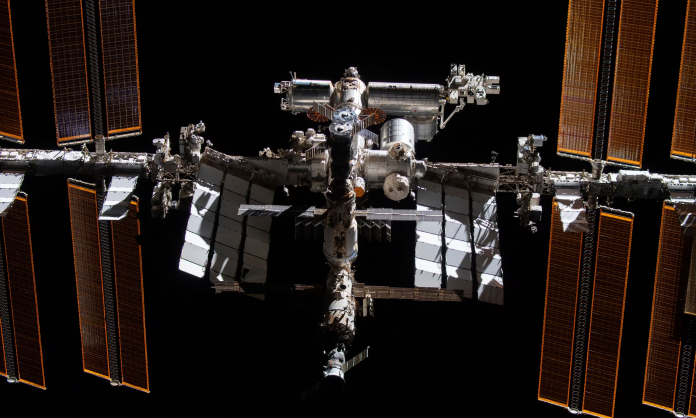A malfunctioning Russian satellite split into nearly 200 pieces of debris, forcing astronauts at the International Space Station (ISS) to take cover for about an hour.
US space agency NASA received a report that the Russian Earth observation satellite RESURS-P1 had split apart on Wednesday. As a result, six US crew members on the space station were instructed to “shelter in their respective spacecraft as a standard precautionary measure.”
Mission Control continued to monitor the path of the debris, and after about an hour, the crew was cleared to exit their spacecraft and the station resumed normal operations.
US Space Command, which coordinates space operations for all branches of the military, initially tracked “over 100 pieces of trackable debris.” The debris reportedly belonged to a satellite declared dead by Russia in 2022. The command also stated that the incident posed “no immediate threats.”
By midday Thursday, US space tracking firm LeoLabs reported that its radars had detected at least 180 objects.
Due to the low orbit of this debris cloud, we estimate it’ll be weeks to months before the hazard has passed.
Russian space agency Roscosmos decommissioned RESURS-P1 due to onboard equipment malfunctions in 2021.
Incident risks
Major debris-in-orbit events are rare but a growing concern, as space becomes crowded with satellite networks. In 2021, Russia hit one of its defunct satellites in orbit with a ground-based anti-satellite missile (ASAT) launched from the Plesetsk rocket site.
However, Jonathan McDowell, a space tracker and Harvard astronomer, suggested that the breakup could most likely have been caused by a satellite issue, such as fuel residue on board causing an explosion.
I find it hard to believe they would use such a big satellite as an ASAT target.
With some 25,000 pieces of debris larger than four inches (10 cm) in space, experts alarmed at the prospect of a Kessler effect. This is a phenomenon in which satellite collisions with debris can create a cascading field of more dangerous debris and increase the risk of accidents.
